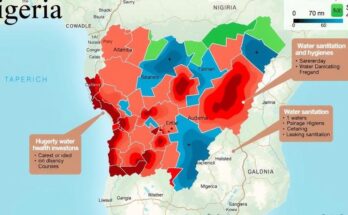The Lake Chad region faces a humanitarian emergency marked by conflicts compounded by climate change. This assessment identifies key climate-fragility risks, including livelihood insecurity attributable to climate variation, increased vulnerability due to conflict, rising resource conflicts, and the potential for armed group recruitment. It underscores the critical need for integrating climate considerations into stabilization efforts to foster long-term peace.
The Lake Chad region is currently grappling with a severe humanitarian crisis driven by intertwining issues of conflict and fragility. Climate change exacerbates these existing political, economic, and security challenges by inducing rising temperatures and unpredictable rainfall, further destabilizing traditional livelihoods in the community. This article outlines findings from a climate-security nexus assessment, which informs potential strategies to address these urgent issues in the region.
The deteriorating situation around Lake Chad is attributed to both environmental factors and escalating conflict. As climate change impacts weather patterns, communities become increasingly vulnerable, which hinders their capacity to adapt and sustain livelihoods. Concurrently, heightened tensions between state security forces and armed opposition groups complicate the landscape, limiting effective response mechanisms to address resilience against climate-related disruptions.
In summary, successful stabilization efforts in the Lake Chad region must address the interlinked nature of climate risks and security challenges. As the climate crisis intensifies, it fuels existing vulnerabilities and conflicts, thereby threatening peace and stability. The identification of specific climate-fragility risk elements is essential to crafting effective responses to secure the future of the Lake Chad communities.
Original Source: reliefweb.int




